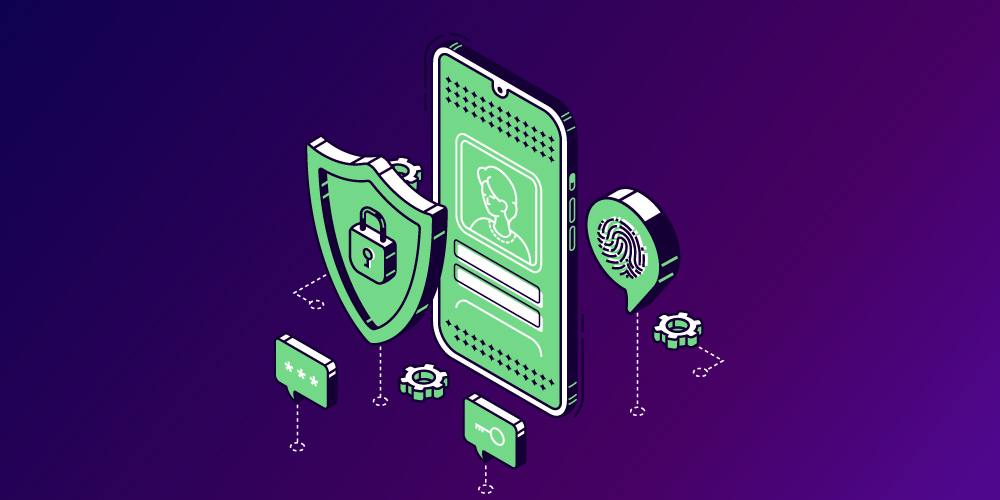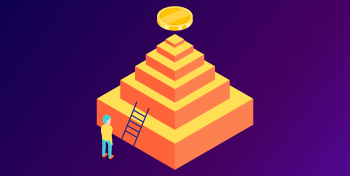Russia’s largest financial institution, Sber, has huge plans for the blockchain and its settlement token, also known as Sbercoin.
Sbercoin joins the CBDC Race
Tokenized cash from financial institutions is at the heart of a plan to create an open blockchain ecosystem where builders can create new products and corporate fashion, all of which is calculated using digital money. Despite the large ambitions, the question remains whether the central financial institution will issue approval.
“We may well be the first on this planet to launch an open platform where you can possibly deploy and execute smart contracts that can be settled with (tokenized) fiat money. And behind this platform is not a fintech startup, but the largest financial institution in the country, ” said Oleg Abdrashitov, head of Sberbank’s Blockchain Lab. The lab is one of many, along with artificial intelligence, robotics and augmented reality, that are transforming a state-controlled financial institution into a company specializing in know-how.
Abdrashitov opposed the Sbercoin label and stressed that it is not a stablecoin. “The money you see on the platform is not being mined. It is definitely not mined, ” Abdrashitov said. “This is just another example of how our buyers deal with a financial institution in cash.”
Sberbank plans to use tokenized money to settle transactions on the Sberbank digital asset platform, which will soon be launched. While this may be an attractive use case, there are two different vital options. One of them is writing good contract functions for cash, comparable to conditional funds and trade finance options. Since the Sber platform is open, these options will be built by buyers and developers. Another use case is to hint at cash to make sure that loans and investments are used to achieve the intended goal.
Digital things
In the past 12 months, Russia has passed new digital property laws that have created a great alternative for banks by solving the problem of regulated digital money holdings (DFA). Operators of digital asset platforms must be Russian organizations approved by the Central Financial Institution. The definition of DFA is broad, which means that corporations can issue tokens for stocks, commodities, bonds, business securities, and other things along with good contracts. While the regulation came into force at the beginning of the year, Sber is currently finalizing the authorized development.
Meanwhile, using identical know-how, over the past 12 months, Sberbank has launched a software platform for renewable viability certificates (REC), which it views as a service token rather than a monetary asset. The financial institution is beginning to actively create a market for buying and selling certificates between corporations, manufacturers, and individuals.
Smart contracts and DeFi-like options
The second use case is a former digital property that allows the use of tokenized money in smart contracts. Abdrashitov’s creative potential was shown in the role of a developer. “The platform will be open to developers, where they will place smart contracts, new products and create miracles, just like what is now with decentralized finance (DeFi),” Abdrashitov said.
Buyers or fintech companies can develop new monetary devices and derivatives. Given the importance of commodities in Russia, some functions are likely to be related to metals, grain, and trade finance. They may include contingent funds, and Abdrashitov described the potential for higher-rated letters of credit containing dozens of warnings.
To implement quite a few features, Sber is launching a Blockchain as a Service internet hosting solution in its SberCloud.
Traceable cash
Traceable cash may be needed to prevent the current collapse of the Greensill financial agency, which will lead to losses for Credit Score buyers Suisse and SoftBank. Network financing is often inexpensive because it is backed up by bills paid by giant corporations. In the case of Greensill, the financing was used not only for accurate gross sales, but also for some potential sales volume, although it was allegedly disclosed to buyers. Thanks to the blockchain, you can track where the money goes, and this is the third area of utility that Sberbank pursues.
“Think about one million rubles, which can be represented by distinctive tokens. You will see how each individual person moves from one supplier to another supplier, to a subcontractor, and so on. You will see the full tree of funds. This is also a significant utility of the platform, ” Abdrashitov said.
For instance, in case medical instruments are assigned a credit rating, the lender can be sure that this is where the money goes. With large-scale funding, the investor can see how the money is spent, just as it is for presidential grants.
However, it has been observed that this can reduce, but not prevent, misuse of funds or outright fraud. Without blockchain, the risks of fraud and manipulation are huge.
Although Sberbank is exceeding its plans for tokenized cash, it should nevertheless receive assistance from a Russian Financial Institution.
Will the central financial institution allow Sbera to tokenize cash?
In the last 12 months, as in a number of other countries around the world, the Bank of Russia has published a document on digital money of the central financial institution (CBDC). However, unlike many others, Beac believes that the central financial institution’s report says much less about how the CBDC could affect commercial banks. As a matter of fact, if the volume of deposits of commercial financial institutions is reduced, the central financial institution can fill this hole.
However, more importantly, this implies that CBDC should be the only legitimate digital currency. The plans of the Central Financial Institution have caused serious controversy within the Russian banking group.
“Our concepts are exclusively complementary to what the Russian Financial Institution and various central banks offer,” Abdrashitov said. “If you want to tokenize only one part of the cash held at a central financial institution, it’s wise to take action for the others.”
Russia’s huge benefits
If we assume for a second that the BEAC will receive the approval of the central financial institution, why should Russia transfer money to the digital currency earlier than other countries in the world?
First, the regulatory readability of digital monetary assets. However, there is also a technical motive.
In most countries of the world, corporations are forced to use private keys, etc. In Russia, all corporations receive private keys and certificates from the federal government. They use them to register their tax returns. More importantly, however, keys are used to denote legally binding contracts. So there is already a vital piece of infrastructure that can be reused to make good contracts.
Sber did not mention the third advantage, but Russia has one of the largest pockets of first-class growth experience on this planet. The question is whether this experience is needed to work with DeFi, or whether he will find it interesting enough to work with the Hyperledger Material enterprise blockchain. In 12 months, Sber plans to hold a hackathon to help build the ecosystem.
DeFi has one huge difference. While many cryptocurrency flows meet the requirements, the DeFi processes themselves do not. As a financial institution, all members of the Sber platform must pass a mandatory KYC (Know Your Customer) check. And banks don’t just follow the rules. They are known for their impeccable security.
DCEP-trend for steeper Sbercoin and CBDC

Do not forget that the main goal of the development and release of CBDC is to deter cryptocurrencies. It is the digital currency of Central Banks that is singled out as a deterrent.
Sberbank is still only trying to stand on its not yet strong legs, while there are already those who are walking with a firm step through the world of finance. We are talking about the DCEP-the digital version of the Chinese yuan. But its purpose is much more noble than cryptocurrencies. Beijing’s ambitions are pushing for the adoption of the yuan as the main rival of the US currency-the dollar.
Today, the markets are gripped by cryptocurrency fever. The price of Bitcoin reached new highs, while the debate raged around cryptocurrencies. But this may be a sideshow to a big emerging trend – the rapid digitalization of the yuan.
This shift, combined with other macroeconomic and political factors, could be the key to accelerating the decline of the dollar’s dominant position as the world’s leading reserve currency. It could also accelerate the adoption of the yuan as the main rival to the US currency.
Central banks around the world have been working on the concept of digital currency technology in recent years. However, few countries are as aggressive as China in their approach to developing their central bank digital currency.
Such a currency would be controlled by a central government agency, eliminating the element of anonymity that is fundamental to the decentralized blockchain of popular cryptocurrencies such as Bitcoin or Ethereum. The theoretical advantages of government oversight of these new digital assets (as with Sberbank) are numerous.
CBDCs enable greater prevention of fraud or crime, enable instant international transactions, reduce transaction costs, expand access to financial services, and facilitate the provision of direct tax incentives to individual citizens.
For China, adopting a CBDC both domestically and abroad will allow its financial system to reduce its dependence on the dollar and limit the role and oversight of foreign financial institutions and regulators. While many countries were only discussing the possible future application of CBDC, China continued to develop.
In April 2020, Beijing piloted a digital currency in four cities, allowing commercial banks to conduct internal tests converting between cash and digital money, account balance checks, and payments. In August, the pilot program expanded to 28 major cities. Aiming for widespread adoption in 2022, China plans to test the digital currency in other major cities, including Beijing and Shanghai, this year.
This innovative approach should accelerate the rise of the yuan on the world stage. Some users outside of China, especially in the US, may not want to use a digital currency controlled by China. However, early adoption in parts of Asia, Latin America, and Africa is likely to be significantly faster.
Currencies are more valued as reserve assets when they meet two conditions:
- first, when they are stable, liquid, and widely used in international transactions;
- secondly, when they are supported by a country with which another state has important security ties.
China’s development in recent years puts it on a clear path to meeting these criteria, as its government maintains relative policy stability. The country accounted for 16 percent of global production in 2019, but the yuan accounted for just over 2 percent of global reserves as of the second quarter of last year.
The lack of yuan-denominated assets that foreigners could own is holding back its growth as a reserve currency. But now the yuan will be supported by the Chinese authorities, opening the domestic bond market worth $15 trillion to foreign participants. Increased demand for these bonds will lead to lower yields and lower borrowing costs.
More importantly, if China takes advantage of the trailblazer advantage to meet global demand for using digital currencies to settle international financial transactions and hold digital assets, the appeal of its CBDC could increase dramatically.
China has also made great strides in invoicing for trade in yuan. The security and geopolitical rationale for holding the yuan has been strengthened by measures such as financing projects in developing countries under China’s “One Belt, One Road” initiative.
Covid-19 could also be a catalyst for wider acceptance of the renminbi as a global reserve currency. So based on what is actually happening with the Central Bank’s money, we can say with confidence that the main goal of both DCEP and Sbercoin is to thoroughly “move” the US dollar, and only then take up the crypt. And whether they want to use them in the West or not is a rhetorical question, since inflation will put everything in its place.


